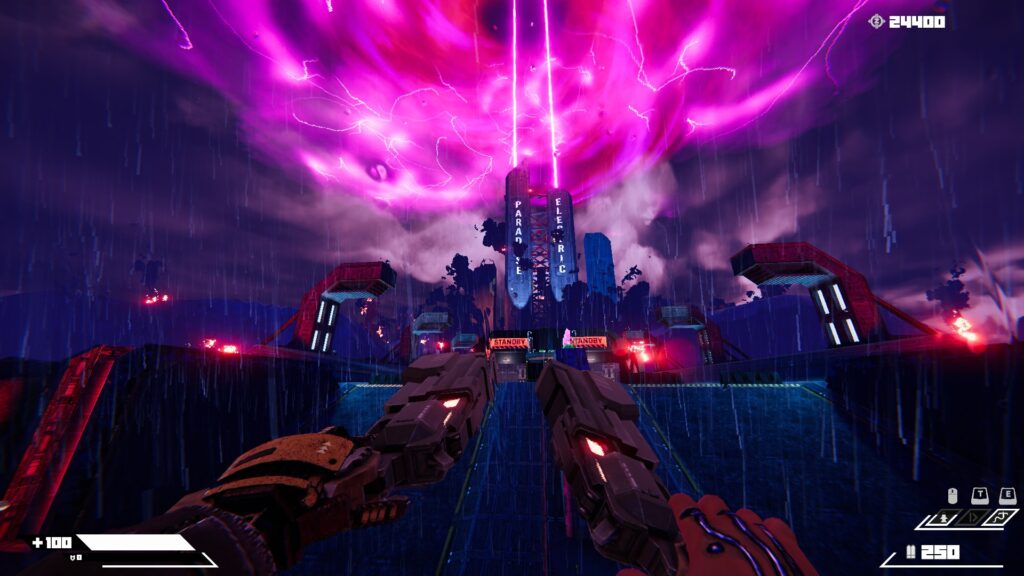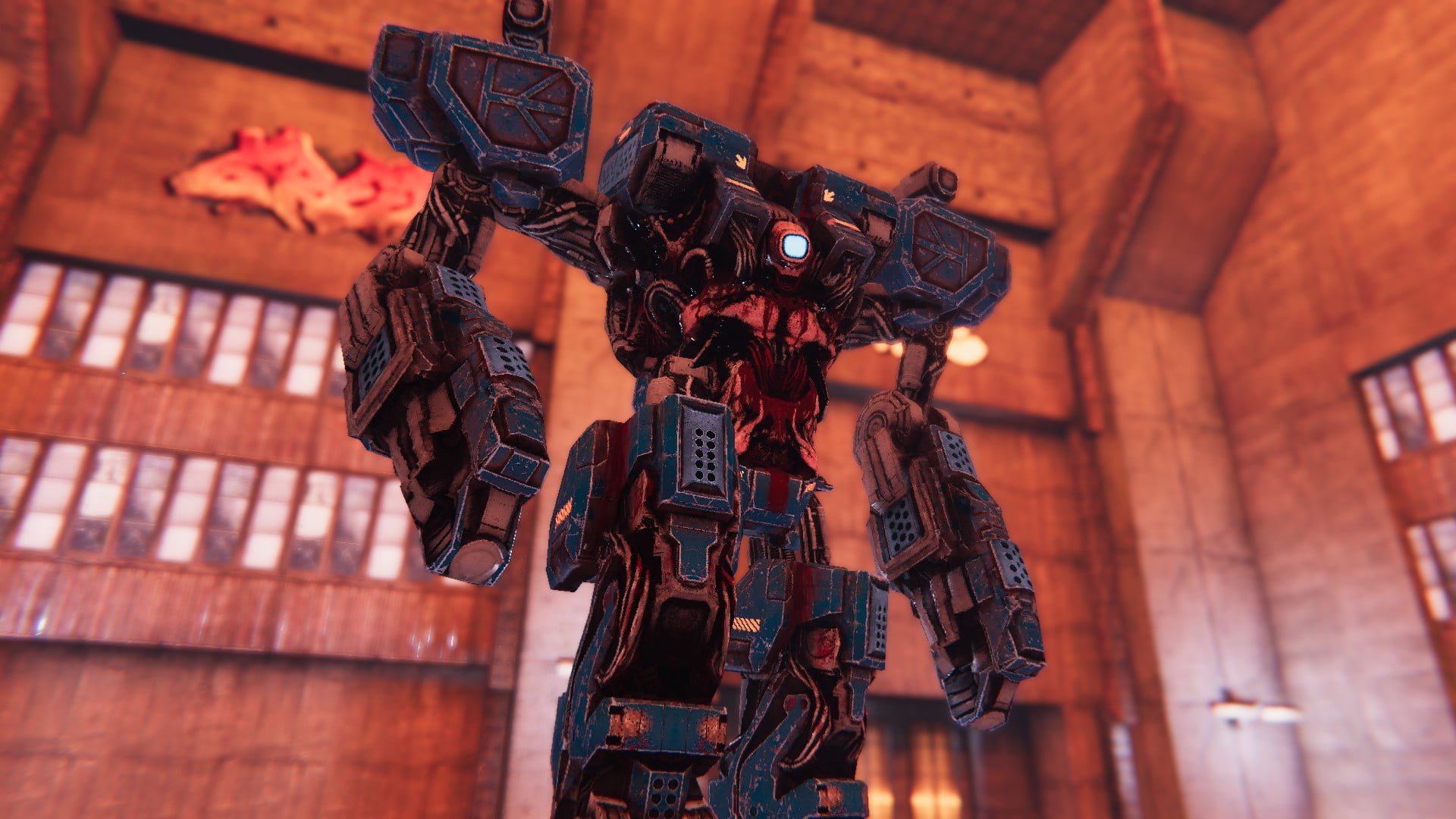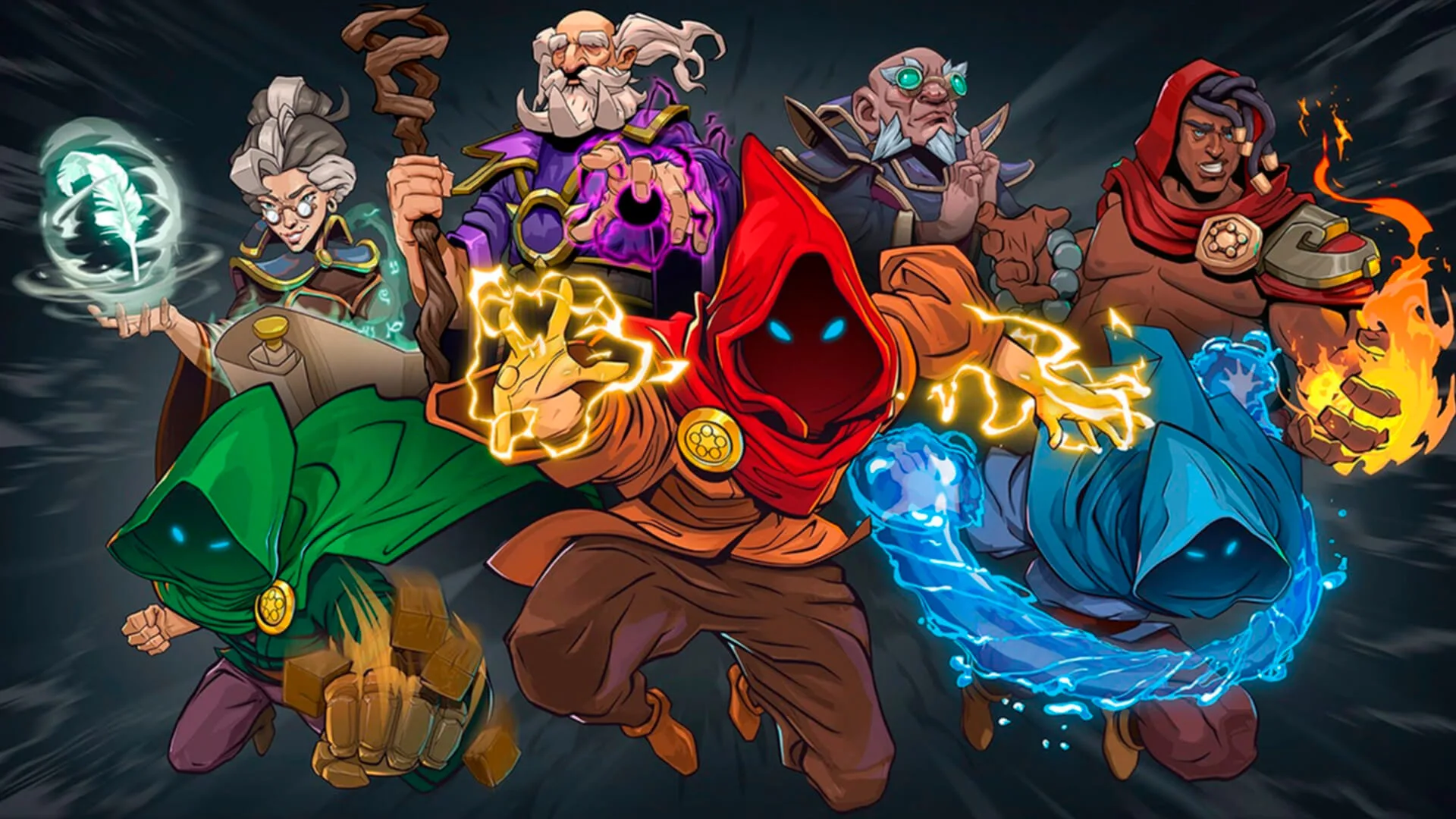It is beginning to get crowded at the top table of retro FPS games. The fertile “boomer shooter” movement continues to deliver modern classics at a striking clip. Emerging from 14 months in early access, the aptly-titled Turbo Overkill is the latest game to join Amid Evil, Dusk, Cultic, and Ion Fury in this august company. Trigger Happy Interactive have delivered a deliriously frenetic odyssey of high-octane ultraviolence, in a doomed city trapped under the malevolent gaze of a wayward AI.
To combat this threat, the player takes on the role of Johnny Turbo – a cigar-chomping cyborg with a bad attitude and a growing arsenal of combat enhancements. He returns to the sprawling cyberpunk dystopia of Paradise to find it dominated by the rogue AI SYN, which views itself as a deity in the making. At the behest of SYN’s creators, the Teratek Corporation, Johnny takes up arms and chainsaw-augmented leg against the machine’s rampaging army of abominations.
This neon- and blood-soaked quest comprises three lengthy episodes, which initially emerged gradually during the early access period. In its complete form, Turbo Overkill is a substantial single-player shooter, which gradually dispenses new enemies, weapons, skills, and gameplay concepts over the course of its campaign. Pacing is a strength, as the mayhem is split into levels which each tend to take around 20 minutes to tackle.
While the cyberpunk theme is shared with Ion Fury, Trigger Happy Interactive have taken a different visual approach. Paradise and its denizens are rendered in full 3D, albeit clothed in crunchy pixels. The city and its environs may not be the most varied or unique location in the genre, but the game does eventually explore more widely and does have a distinctive look which frequently delivers quite spectacular vistas.

The USP of Turbo Overkill is the way its supercharged movement interacts with its often huge spaces. Johnny moves at a constant headlong sprint, and has a dash and a double-jump. There are even more traversal moves – the chainsaw leg facilitates a vicious slide which decimates weaker foes. With the shotgun’s secondary fire, Johnny can boost himself higher – and traversing Paradise often means using Titanfall-style wall-running and context-specific grappling which recalls Shadow Warrior 3.
It is fortunate that these moves are introduced at a steady pace, because the complexity increases still further. Advanced traversal is key not only to the breathers between fights, but also within the fights themselves. Johnny’s arsenal eventually incorporates secondary fire modes and cooldown-based special abilities which can have subtle use cases. A time-slowing ability, for example, is much better used with rapid-fire weapons than with slower ones.There are many purchasable upgrades, assigned to different parts of Johnny’s cyborg frame. This enables players to craft their own distinct build, although the clarity of the UI in this area leaves something to be desired.
These elements, and the game’s structure and rhythm, definitely owe a debt to Doom Eternal but the resemblance to id Software’s modern classic should not be overstated. Turbo Overkill is very much its own thing, which in some ways is more thoroughly modern than the boomer shooter tag implies. Trigger Happy Interactive have been influenced by a variety of older and newer games, and the skillful movement and level design in particular often feel resolutely modern. One drawback to the game is the way that these elements can clash with others which are decidedly backwards-looking. Enemy AI, for example, is very rudimentary and would not be out of place in a shooter released 25 years ago.

Similarly, the occasional first-person vehicle sections resemble those in mods for Duke Nukem 3D – a game also released under the Apogee brand – in their somewhat clunky controls. A fast-paced motorcycle sequence sees Johnny stalked by SYN’s death ray and looks spectacular, but the controls are oddly floaty and alienating. This is one of many curveballs thrown by the campaign. They are a mixed bag, but even those which don’t quite work rarely outstay their welcome.
The efforts to instill variety are crucial, because Turbo Overkill is so wonderfully excessive and proceeds at such a hectic pace. It is the kind of relentless, challenging, and high-intensity shooter which – like Doom Eternal – is possibly best played one section at a time. Long sessions can be wearying, given the remorseless assaults presented by the frequent arena fights in particular.
It lacks a compelling story, and its efforts to vary things up are not always successful, but Turbo Overkill is a consistently exciting and often great-looking shooter. Like Cultic, it is a startling example of how much can be achieved by a one-person developer. Fans of retro shooters, so well catered to in recent years, should be sure to find time to spend time with Johnny Turbo.





